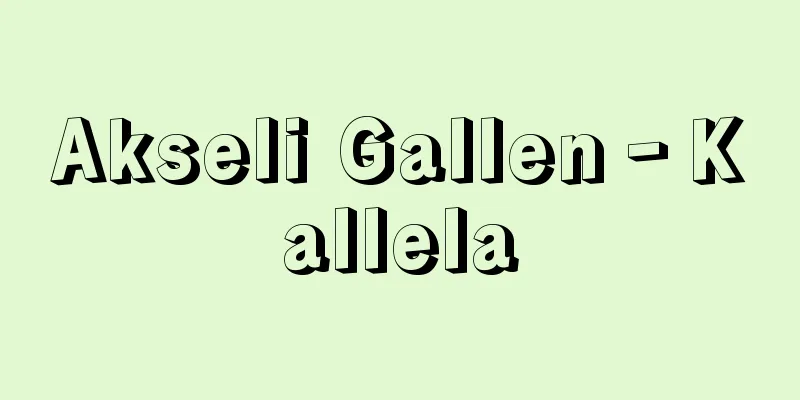Head of the sect - Socho

|
A renga poet of the late Muromachi period. He was originally known by the names Sokan, Choa, and Saiokuken. He was the son of Gojo Yoshisuke, a blacksmith from Shimada, Suruga Province (now Shizuoka Prefecture). He became a close attendant to Imagawa Yoshitada at an early age, and even after he became a monk at the age of 18, he continued to serve as a kind of secretary and often accompanied him in battles. After Yoshitada was killed in battle, he left the Imagawa clan and went to Kyoto, where he studied Zen under Ikkyu Sojun and renga under Sogi. He accompanied Sogi on his journey to Echigo in 1478 (Bunmei 10) and on the journey for "Tsukushi Michinoki" (Sougi's Renga Travelogue) in 1480, and eventually became prominent as a member of the Sogi school, participating in many of Sogi's works, including "Minase Sangin" and "Yuyama Sangin." He returned to Suruga in 1496 (Meiō 5), and was once again welcomed by Imagawa Ujichika, setting up a hermitage in Shibayaken at the foot of Mt. Utsu, traveling between Suruga and Kyoto many times, and died in Suruga on March 6, 1282. His haiku collections include "Kabekusa," "Nachigomori," and "Oinomimi," his treatises on renga include "Renga Sakurei" and "Nagafumi," and his diary and travelogues include "Sougi Shuenki" and "Socho Techi." It is known from "Socho Techi" that he also liked haiku. [Shimazu Tadao] "Kito Saizo's Renga History Essays, Volume 2 (1973, Meiji Shoin)" Source: Shogakukan Encyclopedia Nipponica About Encyclopedia Nipponica Information | Legend |
|
室町後期の連歌師。初め宗歓、長阿、柴屋軒(さいおくけん)とも号した。駿河(するが)国(静岡県)島田の鍛冶(かじ)職五条義助の子。早く今川義忠(よしただ)に近侍し、18歳で出家したのちも書記役のようなことを務めていて、合戦などにもたびたび従軍していた。義忠戦死のあと今川家を離れて上洛(じょうらく)、一休宗純に参禅、また宗祇(そうぎ)に師事して連歌を修行した。1478年(文明10)の越後(えちご)の旅や80年の『筑紫道記(つくしみちのき)』(宗祇の連歌紀行)の旅にも宗祇に同行し、やがて『水無瀬(みなせ)三吟』『湯山三吟』をはじめ、宗祇一座の多くの作品に加わって、宗祇門として頭角を現す。96年(明応5)駿河に帰国、改めて今川氏親(うじちか)に迎えられ、宇津山麓(うつさんろく)に柴屋軒を結庵(けつあん)し、駿河と京都の間を何度も往来し、享禄(きょうろく)5年3月6日、駿河で没。句集に『壁草』『那智籠(なちごもり)』『老耳(おいのみみ)』など、連歌論書に『連歌作例』『永文(ながふみ)』など、日記紀行に『宗祇終焉記(しゅうえんき)』『宗長手記』などがある。俳諧(はいかい)をも好んだことが『宗長手記』から知られる。 [島津忠夫] 『木藤才蔵著『連歌史論考 下』(1973・明治書院)』 出典 小学館 日本大百科全書(ニッポニカ)日本大百科全書(ニッポニカ)について 情報 | 凡例 |
>>: Grassland soil - Sochidojo
Recommend
Eichler, AW - Eichler
…They were treated as 1/3 of the plant kingdom. I...
Dauphiné
The old name of a region in southeastern France. I...
Iosif Volotskii
Around 1439 - 1515 A Russian monk and religious th...
Muslim
…the Arabic word for Muslim. Feminine Muslima, pl...
Hyoe Ouchi
Economist. Born on August 29, 1888 in Awajishima,...
Malkata - Marukata (English spelling)
The ruins are centered around the site of the pala...
Loi Falloux - Falloux (English spelling)
This is a decree on the education system enacted i...
Fireworks
Japanese pop music. The song is sung by female sin...
Ikisan Choshizuka Tomb - Ikisan Choshizuka Tomb
This keyhole-shaped tomb is located in Nijo Tanaka...
Obu [city] - Obu
A city in western Aichi Prefecture. It was incorpo...
Kamo-shi
…Before the Ritsuryo system, the Kurumamochi clan...
Dar al-Funūn (English spelling)
...In order to restore the Qajar dynasty, which w...
Claude Charles Dallet
1829‐78 A member of the Society of Paris Foreign M...
Mimesis (Greek: mimēsis)
The word derives from the verb miméomai, meaning ...
Torreón (English spelling)
A city in the southwest of Coahuila state in north...









